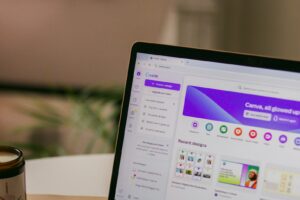Imagine this: someone Googles a solution, clicks your site link, waits… and then gives up. In today’s fast-paced world, every second counts. A slow website isn’t just an annoyance — it could be costing you nearly half of your potential audience. Poor website performance is one of the most common reasons businesses lose traffic, leads, and conversions.
Why “40% loss” isn’t just hype
You may have seen the statistic: “a slow website can lose 40% of visitors.” While exact percentages vary, research confirms that website speed is directly tied to user engagement:
- Google reports that 53% of mobile users leave a site if it takes more than 3 seconds to load.
- Shopify found that when website performance falls short, 45% of users are less likely to buy and 37% less likely to return.
- Another study states that as load time increases from 1 s to 3 s, the probability of bounce increases by 32%.
- For media sites, every extra second of website speed delay may cost ~10% of users.
So yes — losing 40% (or some large fraction) is very plausible, especially for sites that are sluggish or overloaded. The exact percentage depends on your niche, audience, device types, and what competitors are doing — but you should treat the number as a warning: you’re likely losing way more visitors than you imagine.
Why a Slow Site Is Dangerous: What’s At Stake
Here’s what happens when website speed is poor:
- Higher bounce rates & lost engagement
Visitors expect near-instant loading. When your website performance lags, many users click away before even exploring your content.
- Lower conversions & revenue impact
If fewer people stay, fewer convert. A fast site is proven to boost sales, sign-ups, and leads. Poor website speed directly affects your bottom line.
- Poor SEO & Google ranking penalties
Google’s algorithm uses user experience and website performance as ranking signals. A slow site is less likely to show up in search results.
- Mobile users suffer even more
Most users browse on mobile, where patience is even lower. If your website speed is above 3 seconds, you’re losing mobile visitors fast.
- Brand perception takes a hit
Google’s algorithm uses user experience and website performance as ranking signals. A slow site is less likely to show up in search results.
- Mobile users suffer even more
Most users browse on mobile, where patience is even lower. If your website speed is above 3 seconds, you’re losing mobile visitors fast.
- Brand perception takes a hit
A sluggish site feels unprofessional. Over time, poor website performance erodes trust and credibility.
What Causes a Website to Be Slow?
Some common culprits behind weak website performance include:
- Unoptimized images → heavy files slow things down.
- Bloated code & unused scripts → hurting website speed.
- Weak hosting/server issues → bottlenecks at the source.
- Too many plugins & third-party scripts → unnecessary overhead.
- No caching/CDN → every request takes longer.
- Poor mobile optimization → heavier layouts reduce website performance.
How To Fix It: Practical Solutions You Can Start With
Here are proven steps (and best practices) you or your developer can undertake:
| Strategy | What To Do | Why It Helps |
|---|---|---|
| Image optimization | Resize images to display size, compress (WebP, JPEG with quality settings), lazy load off-screen images | Reduces file size, speeds up load |
| Minify & combine CSS/JS | Remove whitespace, merge files where possible, inline critical CSS | Less overhead & fewer requests |
| Eliminate unused code/scripts | Remove or delay loading of scripts not needed on initial load | Cuts down wasted weight and execution time |
| Use browser caching / server-side caching | Store repeat assets locally on the user’s browser or server-side cached pages | Fast responses for repeat visitors |
| Content Delivery Network (CDN) | Serve assets from servers close to your visitors | Reduces latency & speeds delivery |
| Optimize server / upgrade hosting | Use better hardware, faster disk, more memory or move to managed servers | Reduces backend bottlenecks |
| Lazy loading / deferred loading | Only load images or scripts when needed (visible area first) | Improves initial rendering time |
| Limit third-party scripts & carefully audit them | Only include essential tools; delay non-critical ones | Reduces external overhead |
| Use performance monitoring / audits | Use tools like Google PageSpeed Insights, GTmetrix, WebPageTest, Lighthouse | Identifies bottlenecks & tracks improvement over time |
Aim to get your site’s Largest Contentful Paint (LCP) under ~2.5 seconds (a Core Web Vital target) and keep First Input Delay (FID) and Cumulative Layout Shift (CLS) low.
How AppStac Solutions Helps You Recover Those Lost Visitors
This is where AppStac Solutions steps in — we don’t just build pretty sites. We build efficient, high-performing, conversion–focused digital experiences. Here’s how we help:
- Performance Audit → We check your site’s website speed with advanced tools.
- Optimization Plan → Tailored improvements (image compression, code cleanup, caching).
- Implementation → Our experts fix issues affecting website performance.
- Ongoing Monitoring → We track website speed and keep your site running at peak performance.
- Conversion Focus → Faster sites lead to higher engagement and sales.
Every extra second of loading time is a conversion lost. Poor website performance can cost you up to 40% of your audience — but it doesn’t have to. With the right improvements, you can transform your website speed, delight your visitors, and grow your business.
👉 Ready to stop losing customers? Let’s make your site fast, reliable, and high-performing. Contact AppStac Solutions today.
Article Sources:
https://www.thinkwithgoogle.com/consumer-insights/consumer-trends/mobile-site-load-time-statistics
https://www.shopify.com/blog/website-load-time-statistics
https://wp-rocket.me/blog/website-load-time-speed-statistics
https://www.business.com/articles/website-page-speed-affects-behavior






Add comment